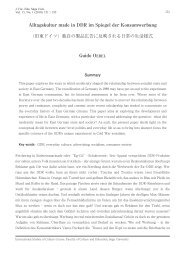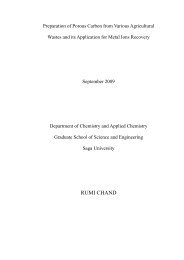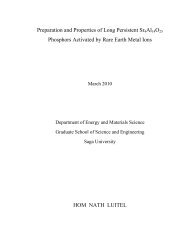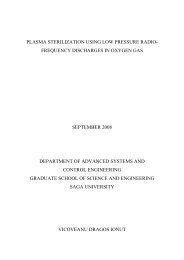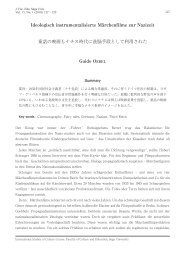High Order Harmonic Oscillators in Microwave and Millimeter-wave ...
High Order Harmonic Oscillators in Microwave and Millimeter-wave ...
High Order Harmonic Oscillators in Microwave and Millimeter-wave ...
- No tags were found...
Create successful ePaper yourself
Turn your PDF publications into a flip-book with our unique Google optimized e-Paper software.
2 <strong>Oscillators</strong><br />
voltage transfer function of a parallel RLC resonator.<br />
H(ω) =<br />
1 + jQ<br />
1<br />
(<br />
ω<br />
ω 0<br />
− ω 0<br />
ω<br />
) =<br />
1<br />
1 + 2jQ∆ω/ω 0<br />
, (2.36)<br />
where ω 0 is the resonant frequency of the oscillator, <strong>and</strong> ∆ω = ω − ω 0 is the frequency<br />
offset relative to the resonant frequency.<br />
Noise-free<br />
amplifier<br />
Vi(ω)<br />
Sθ(ω)<br />
A=1<br />
V0(ω)<br />
Sφ(ω)<br />
H(ω)<br />
Fig. 2.7: Feedback amplifier model for characteriz<strong>in</strong>g oscillator phase noise.<br />
S<strong>in</strong>ce the <strong>in</strong>put <strong>and</strong> output power spectral densities are related by the square of the<br />
magnitude of the voltage transfer function [13], we can use (2.35)-(2.36) to write<br />
S φ =<br />
=<br />
1<br />
2<br />
= 1 + 4Q2 ∆ω 2 /ω0<br />
2 S<br />
∣1 − H(ω) ∣ 4Q 2 ∆ω 2 /ω0<br />
2 θ (ω)<br />
(<br />
ω 2 ) ( )<br />
0<br />
1 + S<br />
4Q 2 ∆ω0<br />
2 θ (ω) = 1 + ω2 h<br />
S<br />
∆ω0<br />
2 θ (ω) (2.37)<br />
where S θ (ω) is the <strong>in</strong>put power spectral density, <strong>and</strong> S φ (ω) is the output power spectral<br />
density. In (2.37) we have also def<strong>in</strong>ed ω h = ω 0 /2Q as the half-power (3 dB) b<strong>and</strong>width<br />
of the resonator.<br />
The noise spectrum of typical transistor amplifier with an applied s<strong>in</strong>usoidal signal at<br />
f 0 is shown <strong>in</strong> Fig. 2.8. Besides kTB thermal noise, transistors generate additional noise<br />
that varies as 1/f at frequencies below the frequency f α . This 1/f, or flicker, noise is<br />
likely caused by r<strong>and</strong>om fluctuations of the carrier density <strong>in</strong> the active device. Due to<br />
21



